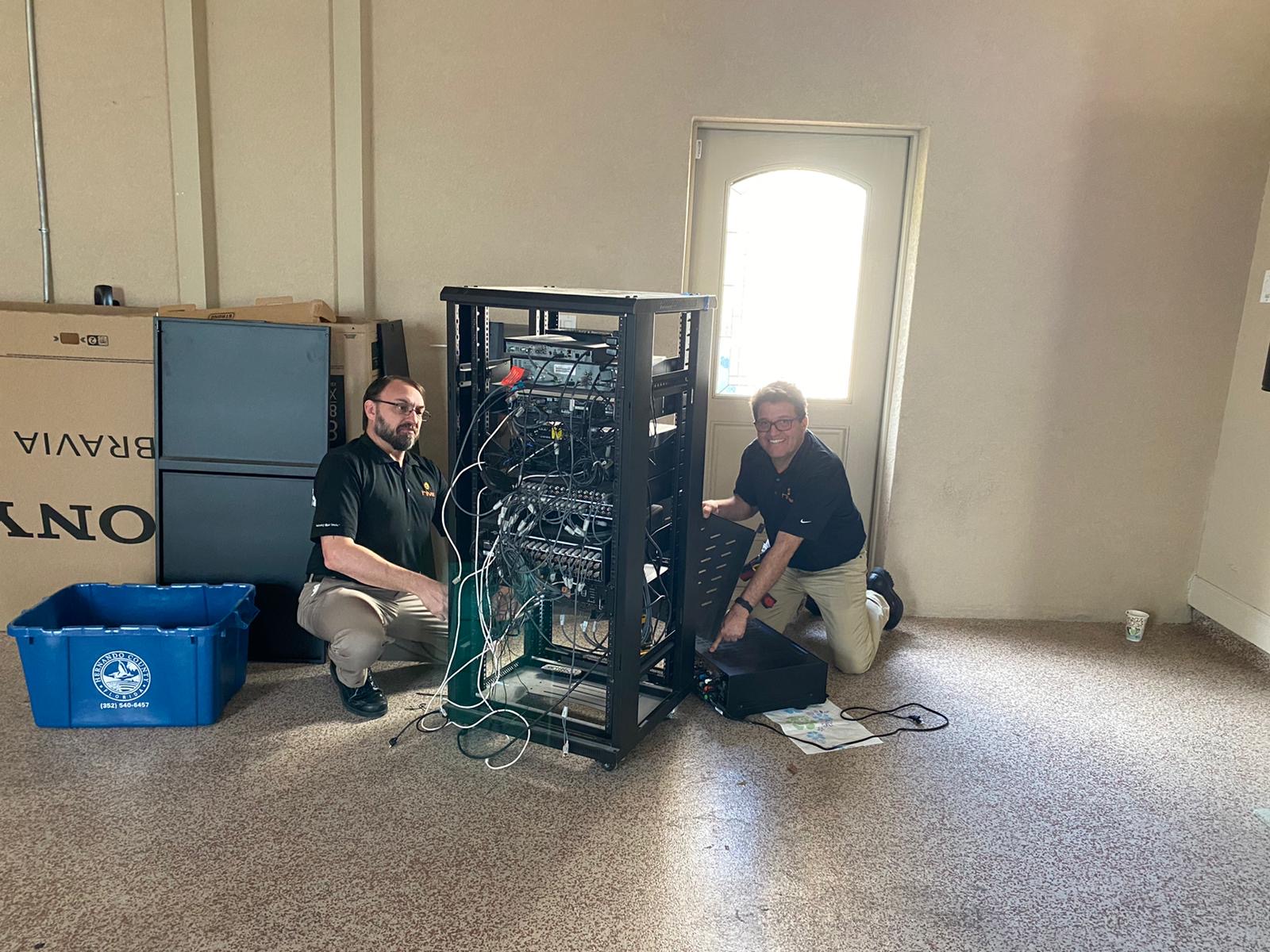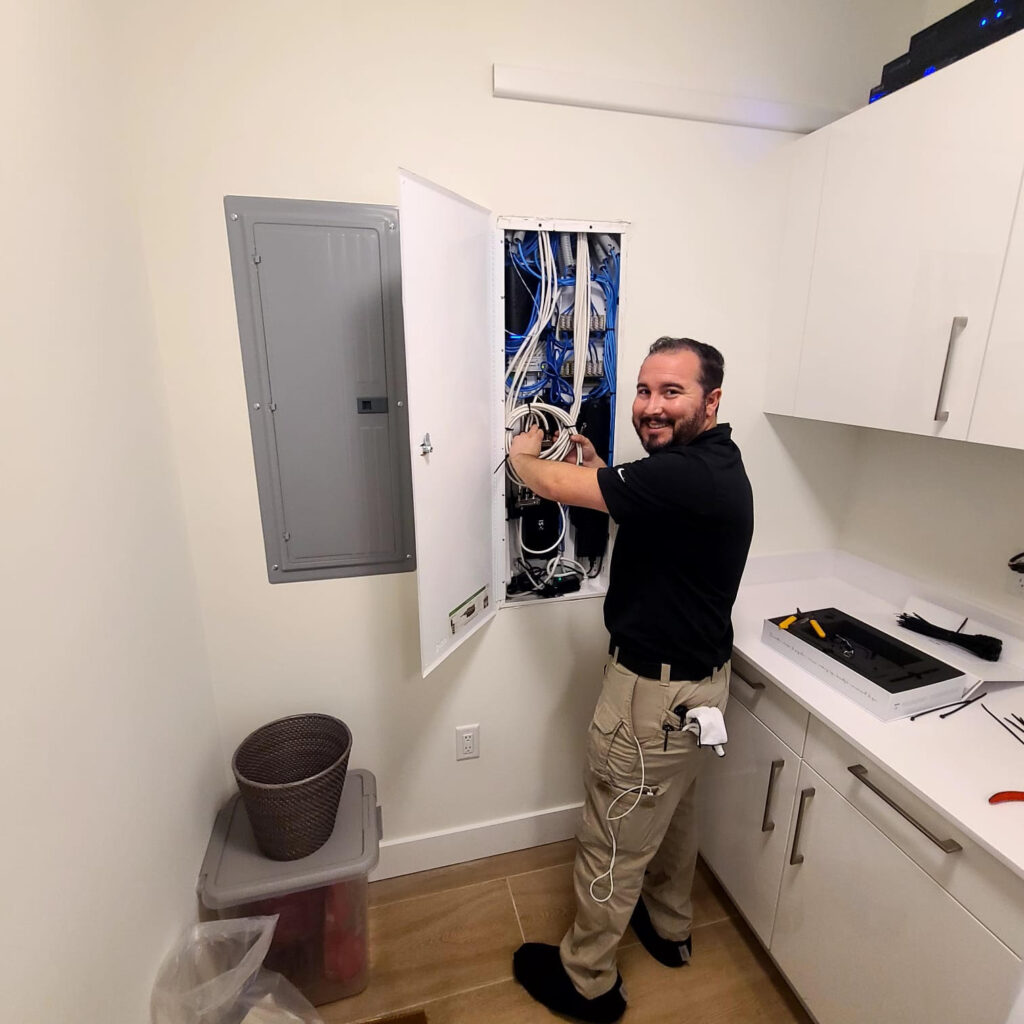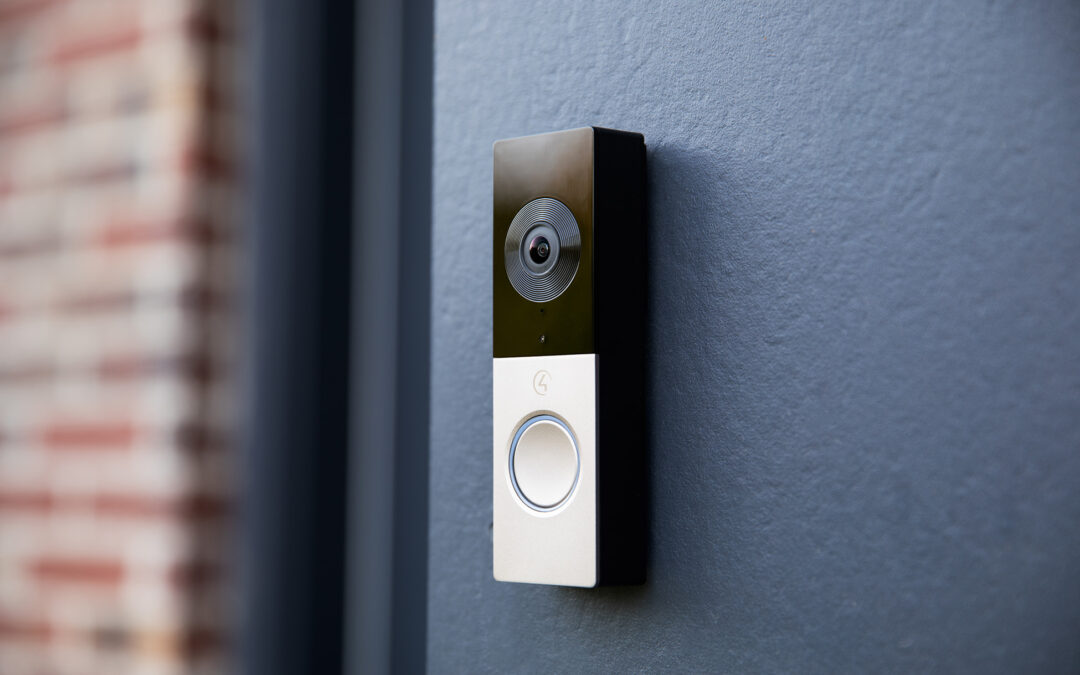You’ve had this Zoom call with a client scheduled for weeks. So of course, today is the day you have a spotty WiFi connection in your home office.
The call starts in five minutes, so you go into troubleshooting mode. You turn the WiFi off and on. You move around your house, trying to get a signal everywhere from the far end of your office to your master bedroom. Nothing’s working.
Finally, you get a signal, though it’s weak. You get through the Zoom call with your signal breaking up every few minutes. By the end, you’re so annoyed that you want to throw your whole router out the window.
Even if your situation isn’t as extreme, we’ve all gotten fed up with weak WiFi signals or dead zones in our homes. We get it.
Luckily, several options can help you have stable, strong WiFi across your entire home. Not all solutions are right for every situation, so we’ll break down two options that might be a good fit for you:
- Wireless access points (WAPs)
- Wireless mesh networks, or mesh WiFi
We specialize in home automation here at Hive, a field that’s highly dependent on networks like the two we’ll analyze today. Just as WAPs might be a better fit than mesh WiFi, you might find that another company is a better fit for you. Regardless, we’ll give you the information you need to find your ideal solution.
By the end of this article, you’ll know:
- What WAPs and mesh WiFi are
- What installation is like for both
- What the WiFi performance for each is like
- The cost of each system
What are Wireless Access Points and Mesh WiFi?
WAPs and mesh WiFi are both devices that provide stable WiFi throughout your home, but both of them operate in different ways.
Wireless access points are hardwired points that produce WiFi signal throughout your home. Think of it like an in-ground sprinkler system. Water flows through the underground pipes to the sprinkler heads, which spray water around different areas of a landscape. The ability to connect to the network flows through an ethernet cable to the WAPs, which produce WiFi.
Mesh WiFi has multiple nodes that talk to each other to provide WiFi throughout a space. Think of it like literal mesh – several separate points connect to cover an area with WiFi. A node handles the WiFi for its immediate surroundings. When you move from one room to another, your device connects to the next closest node of the mesh.
The biggest difference between the two is that wireless mesh networks are wireless nodes that communicate with each other, while WAPs are wired devices that produce WiFi.
Comparing Wireless Access Points vs. Mesh WiFi
Let’s analyze WAPs and mesh WiFi on the following criteria so we get a head-to-head comparison:
- Installation
- WiFi Performance
- Cost
Wireless Access Points
Installation
As we discussed above, WAPs are hardwired devices that produce WiFi in various parts of your home. Hardwiring usually requires getting behind drywall to place the wires. Some homes are even pre-wired to accommodate WAPs.
Because of this, most people need to hire outside help to install their WAPs, an added expense. And some areas can’t be wired easily, like spaces with concrete walls. However, if you’re confident with wiring and working with drywall, you can install it yourself.
WiFi Performance
Both options here can provide stable WiFi, but Wireless Access Points are one of the best ways to do so because they’re hardwired.
We talk about hardwired vs. wireless devices in another post. But the gist is that hardwired devices are more stable because the connection speed isn’t weighed down by other devices being connected to it.
This makes WAPs great for situations where you have a lot of devices that need to be connected to a network. They aren’t immune to slow-down issues, though. If a WAP has too many devices connected to it, like in a bar or cafe, the connection speed will slow down.
WAPs can also give you strong coverage no matter where you are in your home if you place them strategically. A certified technician can look at your property and help you place your WAPs to get the best coverage possible.
They can also be easy to troubleshoot; a Wireless Access Point can be worked on remotely by a technician, so there’s no need to pay someone to come fix it. And sometimes it’s as easy as unplugging it and plugging it back in.
Cost
Depending on the size of the area and your network needs, WAPs can be between $80 and $1000.
As we said before, WAPs can be more expensive because of the labor involved in the installation. This includes work on the drywall, but might also include fees for a qualified technician to figure out the ideal areas for your WAP.
However, you can also DIY them for less if you feel you can handle the wiring and drywall work yourself. This, of course, is less expensive. You just need to pay for the devices and construction materials.
Mesh WiFi
Installation
Installing mesh WiFi is easy. You can do it yourself without having to get behind your walls or run complicated wiring. Many can be set up using an app that walks you through the process.
They’re great for spaces with limitations, like spaces where you’re unable to tear down drywall or areas where a thick concrete wall or ductwork could make it difficult to install WAPs.
WiFi performance
Mesh WiFi can be very stable and reliable if set up properly. There won’t be a gap in connection when moving from one room to another, and you don’t need to manually switch to an extended network as you sometimes would if you were using a WiFi extender.
Mesh networks are also “self-healing”. If one node goes out, the other nodes will figure out the most efficient way to get you a signal using the nodes that are still available.
However, a wireless mesh network has a few drawbacks. Because it’s wireless, it might be slower than a hardwired WAP that has several devices connected to it. Think of it like a baton handoff in a relay race – the handoff slows you down to some degree, even if it’s just a few milliseconds.
It’s a good choice if you don’t have many devices to connect to your network. For instance, if it’s just you and your spouse and each of you has a laptop, a phone, and a tablet, a mesh might be more than enough.
But if you’re a family of five and have all of those aforementioned devices, plus security cameras, doorbells, and automated lighting in every room of a large house, a mesh might cause more problems than it would solve.
Also, if it’s not set up well, you can experience a gap or delay as you move from one room to another. However, due to their ease of use, it’s possible to avoid these problems with some research and care.
Cost
Wireless mesh networks are less expensive in that you don’t have to do any construction to install them. You don’t even need a professional to do it – you can do it yourself.
The cost of the devices varies, but typically they can cost from $110 up to $1500, making them affordable for several price ranges.
Should I choose a WAP or a mesh?
Both options can tackle your issue – eliminating WiFi dead zones and inconsistent coverage. But everyone’s situation is different, so one option might be better than the other. Here’s a quick summary:
Wireless access points are good if:
- You’re okay with hiring someone to install it, or are comfortable with handling the wiring and construction involved
- Need to support a lot of devices
- If you want the most stable set-up possible
Mesh networks are a good fit if:
- You want something easy and quick to install or have a space where you can’t get behind the walls
- You have fewer devices to support
- You want something more affordable
Now What?
By now you probably have a good idea of what option works for your home. But if you don’t, consider the following:
- Your budget – Consider not only the amount you’re willing to spend right now but the value it could bring down the line. For instance, if your teenager does online school while you do video calls with clients every day, it might be worth investing in something more expensive.
- Your space – is your space large, or small? Do you have specific dead spots that need to be addressed? Are you able to do the necessary work to have something installed?
- Your lifestyle – Do you have a lot of guests? Or do you have a lot of devices that you’d like to connect to? Do you want your WiFi to reach every inch of a large property?
Your router will thank you for not tossing it out the window. If you’re facing other technology issues, check out our article on our top ten technology frustrations and how to troubleshoot them. And once your WiFi connection is stable, learn how you can keep your network safe. Are you based in Tampa Bay and would like assistance in setting up a WiFi network in your home? Feel free to reach out to Hive today. We’re happy to help or answer any questions you might have.




